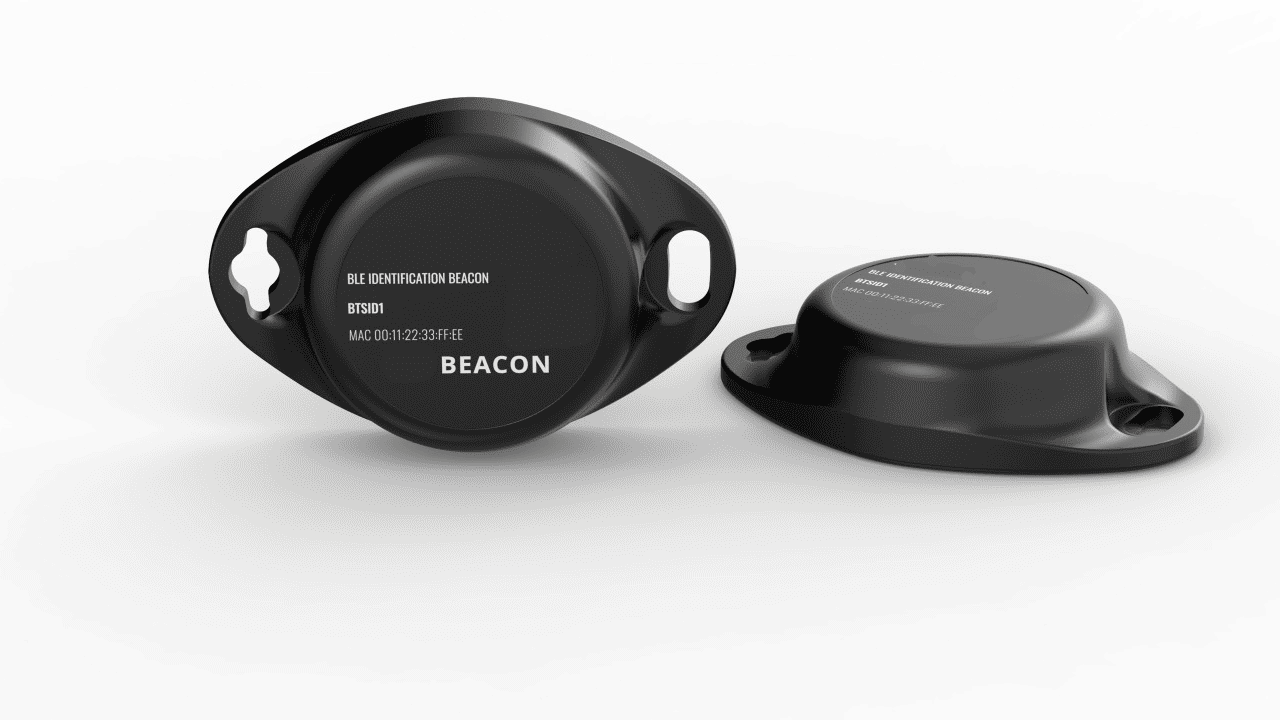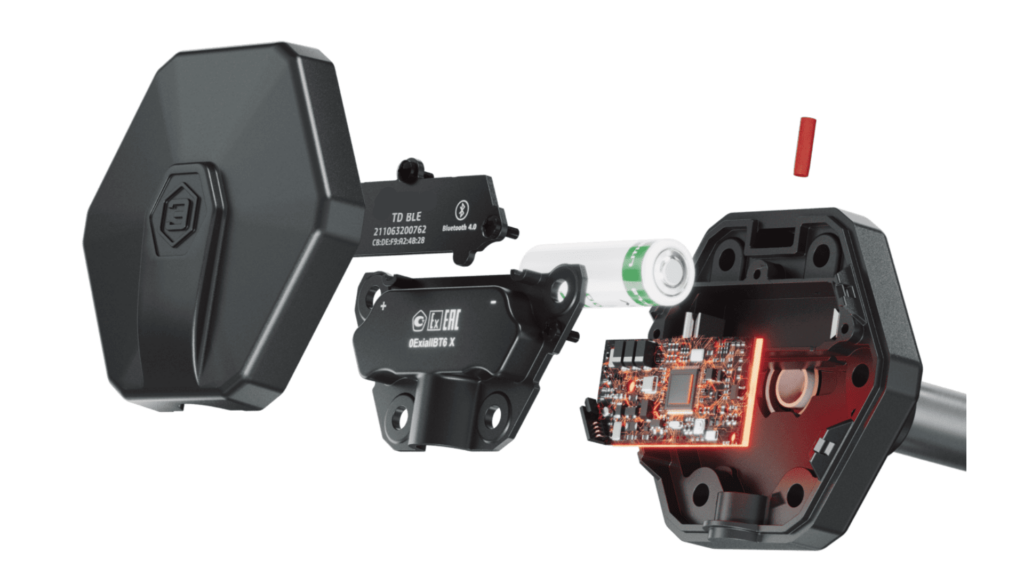In the world of fleet management, asset tracking, and IoT-driven monitoring, Bluetooth Low Energy (BLE) technology is revolutionizing how businesses track and manage their operations. Two key BLE device types that are often confused are BLE Beacons (IDs) and BLE Sensors. While both play essential roles in tracking and monitoring, their applications and configurations differ significantly.
For companies with BLE Beacons & Sensors as part of their solution, understanding the differences between these devices and how to configure them properly is crucial to maximizing efficiency, security, and data accuracy. This article will break down the differences, use cases, and best practices for setting up BLE Beacons and Sensors in your tracking system.
Understanding BLE Beacons (IDs) and BLE Sensors
What Are BLE Beacons (IDs)?
BLE Beacons, also referred to as BLE Tags or BLE IDs, are broadcast-only devices that transmit a unique identifier (ID) at regular intervals. They do not actively sense environmental data but rather serve as a location marker or asset identifier.

Key Characteristics of BLE Beacons:
- Unique Identifier: Sends a constant ID signal that can be picked up by BLE-enabled receivers (like GPS tracking devices, smartphones, or gateways).
- No Data Sensing: Unlike sensors, they do not collect temperature, humidity, or motion data.
- Low Power Consumption: Since they only broadcast an ID, their battery life is significantly longer (typically 3-5 years).
- Short to Medium Range: Usually effective between 10-100 meters, depending on the power settings and obstacles.
Common Use Cases for BLE Beacons (IDs)
- Asset Tracking: Attach BLE beacons to tools, containers, or equipment to track their last known location when they come within range of a receiver.
- Backup Tracking: Attach BLE beacons to vehicles under asset finance as an extra level of security in instances where main trackers may be compromised.
- Driver & Passenger Identification: Assign BLE ID tags to drivers, students (in school buses), or authorized personnel for automated check-ins and security validation.
- Geofencing & Automated Check-ins: Place BLE beacons at depots, warehouses, or parking lots to trigger automated location updates when a vehicle enters or exits a zone.
What Are BLE Sensors?
BLE Sensors are active monitoring devices that measure environmental conditions and send real-time data to a receiver. Unlike beacons, which only broadcast an ID, BLE sensors collect and transmit information such as temperature, humidity, motion, tire pressure, or fuel levels.

Key Characteristics of BLE Sensors:
- Data Collection: Actively measure and transmit specific parameters (e.g., temperature, pressure, movement).
- Shorter Battery Life: Due to frequent data transmission, battery life is shorter compared to simple beacons (typically 1-3 years, depending on usage).
- Multiple Data Points: Unlike beacons, which only send an ID, BLE sensors can report multiple readings simultaneously.
- Triggered Alerts: Can send notifications based on threshold breaches (e.g., high temperature, low tire pressure, or unexpected movement).
Common Use Cases for BLE Sensors
- Cold Chain Monitoring: BLE temperature sensors ensure that perishable goods in refrigerated trucks remain within safe temperature limits.
- Fuel Monitoring: BLE fuel level sensors track fuel consumption and detect possible theft or leaks.
- Tire Pressure & Vehicle Health: BLE TPMS (Tire Pressure Monitoring System) sensors help maintain optimal pressure to reduce wear and tear.
- Security & Anti-Theft Alerts: BLE motion sensors detect unauthorized movement of assets or cargo.
Proper Configuration
To maximize the performance of BLE tracking devices, proper configuration is essential. Below are the key steps to setting up BLE beacons and sensors in your tracking system.
Configuring BLE Beacons (IDs)
- Assign Unique IDs: Ensure each beacon has a unique identifier that matches the asset, driver, or location it represents.
- Set the Transmission Power: Adjust the signal strength based on the required range. Higher power increases range but drains the battery faster.
- Define the Broadcasting Interval: A lower interval (e.g., every second) provides frequent updates but reduces battery life. A higher interval (e.g., every 5-10 seconds) conserves power but may result in slight delays in detection.
- Place Beacons Strategically: Install them in locations with minimal interference (e.g., away from metal surfaces or radio signal disruptors).
- Integrate with Tracking Software: Ensure the beacons are properly linked to your tracking platform for seamless identification and reporting.
Configuring BLE Sensors
- Calibrate the Sensor: Before deployment, ensure the sensor is calibrated to accurately measure temperature, pressure, humidity, or other parameters.
- Set Data Transmission Frequency: Define how often the sensor should send data. Frequent updates provide real-time accuracy but drain battery life faster.
- Define Threshold Alerts: Configure upper and lower limits for parameters like temperature or fuel levels, triggering alerts if values exceed safe ranges.
- Test Signal Strength & Connectivity: Ensure the sensor’s signal can reach the receiver without interference from walls, metal objects, or other obstructions.
- Enable Cloud Integration: Ensure the tracking system receives and processes data correctly, allowing for automated alerts, analytics, and reports.
BLE Beacons vs. BLE Sensors: A Quick Comparison
| Feature | BLE Beacons (IDs) | BLE Sensors |
| Function | Transmits unique ID only | Measures & transmits environmental data |
| Data Type | Static ID | Dynamic values (temp, pressure, motion, etc.) |
| Battery Life | Longer (3-5 years) | Shorter (1-3 years) |
| Power Consumption | Very low | Moderate to high |
| Use Cases | Asset tracking, driver ID, geofencing | Temperature monitoring, fuel tracking, tire pressure monitoring |
Conclusion
For GPS tracking companies looking to offer BLE Beacons (IDs) and BLE Sensors as part of their solutions, understanding the differences between each is critical for deploying the right solution based on specific operational needs. Beacons are ideal for location-based identification, while sensors provide real-time monitoring of conditions such as temperature, pressure, and fuel levels.
Proper configuration ensures accurate data, extended battery life, and seamless integration into your tracking system. Whether you are managing a fleet, monitoring cold storage, or preventing fuel theft, leveraging BLE technology correctly can optimize your operations and drive efficiency.
Want to Implement BLE Tracking for Your Company?
If you’re looking for a robust BLE-enabled GPS tracking & fleet management solution, contact us today to discuss how our platform can transform your business!